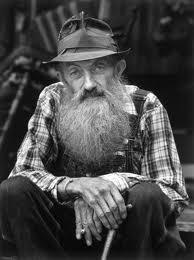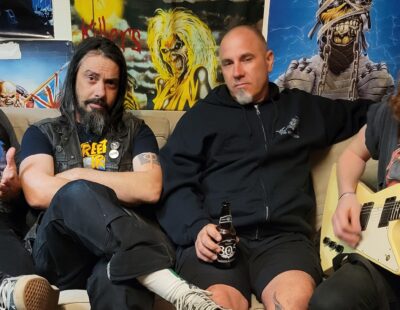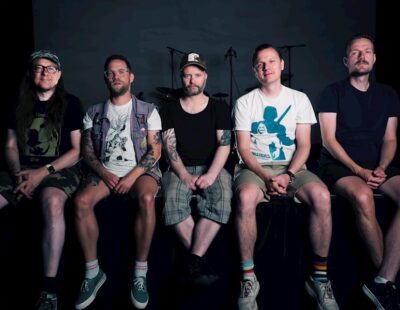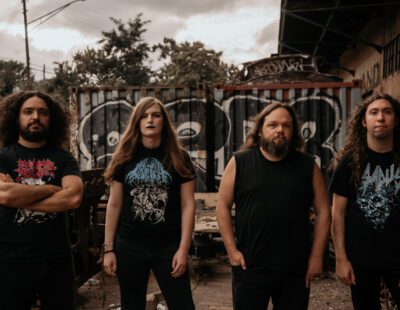By Nate Hall (U.S. Christmas)
I can’t say this is a “Top 5” list, because I couldn’t possibly rank Appalachian people on any kind of scale. Some of these are people I have known, others I never met. All of them are distinctly Appalachian.

Popcorn Sutton — Maggie Valley, NC.
The late great moonshiner Marvin “Popcorn” Sutton was one of the most vivid and interesting Appalachian people of all time. One of my great regrets is that I never got to meet him. His voice and accent were pure Appalachia, as were his deliberate shuffle, bearded expressionless stare, and his razor wit. Everything about him was memorable. He drove an ancient Model –T and lived without most of the comforts of the modern world. He was by turns profane and benevolent, an outlaw and tourist magnet. Youtube is filled with Popcorn’s hilarious interviews and clips (the one with Johnny Knoxville is priceless), and there are numerous books and articles about his life. He reminds me of many salty old guys I know. Despite numerous arrests and convictions for moonshining, Sutton remained defiant toward any government agency that came snooping around. For some reason the feds really went after him late in his life, even though he never hurt anybody and attracted lots of positive attention to Maggie Valley. When they slapped a long sentence him, he finally gave up the fight for good. I hope all those ATF guys are happy with themselves. They screwed mountain people once again. Youtube link.

Red Wilson — Ledger, NC.
Although you probably don’t recognize the name, he was widely known in folk music circles. Red was, to my knowledge, the last man alive to carry the old-time fiddle tradition from authentic family roots. Well-known folk musician David Holt was a huge admirer, and interviewed him on several occasions. Red was a good friend of mine and at my wedding he played his beautiful tune “Marie’s Waltz”, a song he wrote for his wife. Like Popcorn, he possessed an amazingly quick wit and unique charisma. He was little and skinny but he was one of those people who never seemed to change once he came into his own. When he was young he survived a hit from a German mortar round in WWII that blew most of the flesh from his leg, and after months of recovery he returned home to play the music he loved. He used to tell me stories about roving around at night and playing music and generally raising hell. We never really played music together but he seemed to understand that I was doing something in my own way and he seemed pleased with that. He had a soothing, kind voice and he always welcomed me into his home. Red passed away a few years ago and I still miss him. Here is an interview by Holt with Red Wilson: Youtube link.

JD McCormick — Marion, NC.
Another name you probably don’t know. JD was a man I met working as a reporter in Marion. He was a musician, but most famous for his handmade guitars. These instruments are amazing works of art. He sold me one of the last ones he made, and even though it is dated 1999 it looks like it is about a hundred years old. Its bound edges are filled with the melted plastic from the little steak spears from Western Sizzlin (a southern restaurant), and there is a nautical star on the body. He told me several times that Loretta Lynn had one of his guitars, and JD didn’t lie. When he was young he lost three fingers on his fret hand in a sawmill accident, but somehow he played throughout his long life. He is one the cover of a Jock Lauterer’s book “Runnin’ on Rims”, a great collection of southern profiles. Like many traditional Appalachian men, JD was a Baptist preacher and possessed a strong faith. I visited him during his last days and I will never forget the smile on his face, he was not afraid. JD was a true believer, and that is a beautiful thing.

Jesco White — Boone County, West Virginia.
Filmmaker Jacob Young’s documentary “The Dancing Outlaw” made Jesse “Jesco” White a cult figure. If you have never seen it, do whatever you have to do to get a copy. Young initially wanted to make film about Jesco’s father D. Ray, who was a well-known Appalachian dancer. The resulting documentary was unforgettable, a true classic. The death of D. Ray is explained in “The Dancing Outlaw”, but the focus is always on Jesco – one of the most charismatic, tragic, and bizarre figures in Appalachian history. In the film, Jesco’s wife Norma explains, “Jesse can be three people: he is Jesse, he is Jesco, and he is Elvis”. She goes on to explain these split personalities: “Jesse is good, Jesco is evil, and Elvis is – I guess just Elvis.” The film is extremely funny at times, heartbreaking at others. Jesco is deeply scarred by violence, jail, alcohol, and chemicals – and the film depicts this in blinding detail. Jesco freely admits to huffing lighter fluid, gasoline, airplane glue, and any other caustic things he could find. He also witnessed the senseless, brutal murder of his father. His reaction to this is deeply moving, and it is clear that the bonds in the White family run deep. But even with this humanity, there is an air of menace about Jesco. I once interviewed him over the phone. He was very open with me and seemed eager to talk. He quoted full Bible verses at length and went into great detail about his troubles. This happened in early 2000, at a time when the interest in the original documentaries had waned and the recent films about the Whites had not been conceived. At that time Jesco felt alone and used. He had a point, lots of people knew who he was and thought he was interesting. People wrote songs about him, but he was still stuck in poverty. I was fascinated by his stories but I also remember thinking I was glad to be out of his arms reach. Jesco, like many rough types I know here should always be respected. Mastodon once sampled his famous line warning his wife Norma about her “Sloppy, slimey eggs.” Be sure, he meant it. He is what he is. A hard life makes for a hard person. Jesco, like many other people in my area, was born into a hopeless situation. His family was strong, but there was nothing for him. Nothing. No education, no job, no chance – nothing but poverty. The modern world simply made it impossible for him to live as his parents had, and he didn’t know what to do. That is a recipe for trouble, and one all too common in Appalachia.

Ray Hicks — Banner Elk, NC.
Mr. Hicks lived very close to me, but I never met him. He was a famous storyteller, and by all accounts he was a great human being. Many people documented his life, both on film and in print. I first learned about him through documentaries on public television. His pleasant mountain voice and way of speaking are truly Appalachian. Mr. Hicks can be heard in hours of audio recordings of his stories. Storytelling is an art, and Mr. Hicks was a master. He had the ability to draw people in from the first word and keep them captivated until he was done. The website rayhicks.com contains tons of information about the man and his life. He said many memorable things, but David Holt documented my favorite Ray Hicks quote. Holt said, “The last time I saw Ray, we talked about natural healing. He said they used to put honey in a wound or sometimes cobwebs. But Ray said when he was a boy, the best thing to put in an open cut was good clean dirt. Then Ray said that today, there is no dirt in the whole world clean enough to heal.” It sounds crazy, but my older relatives tell me the same thing. Hicks preserved an enormous amount of information for future generations, and he epitomized the great characteristics of mountain people.
** U.S. Christmas’s Run Thick In The Night is out now on Neurot Recordings. Order here.






